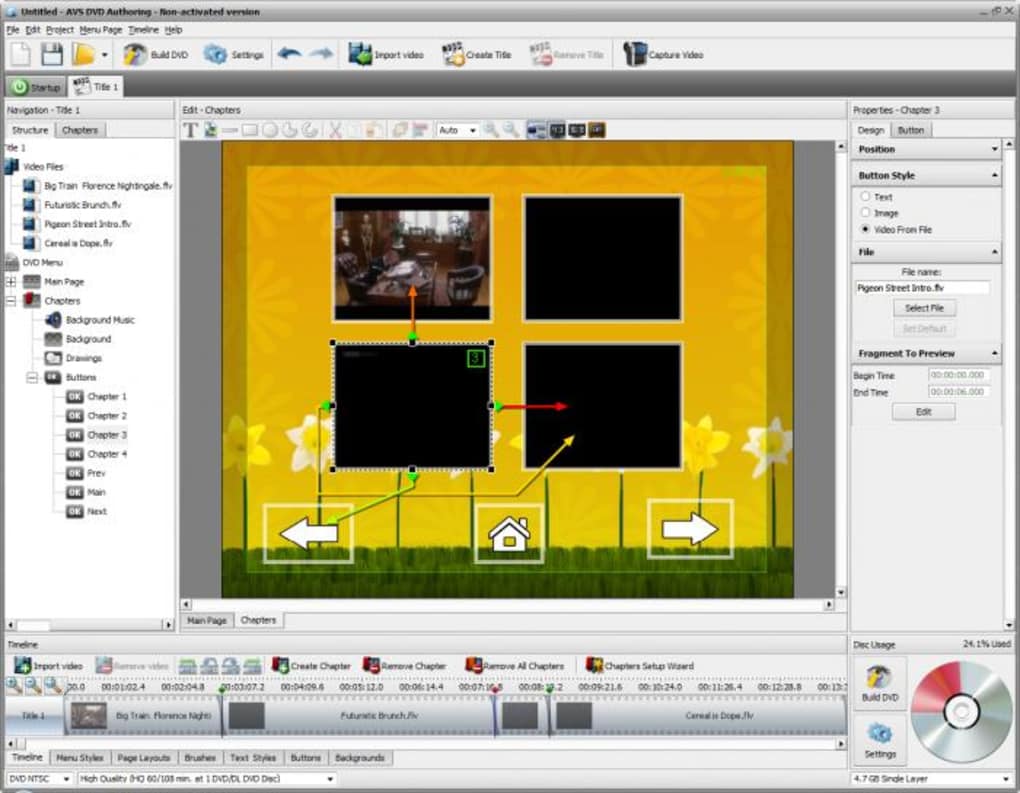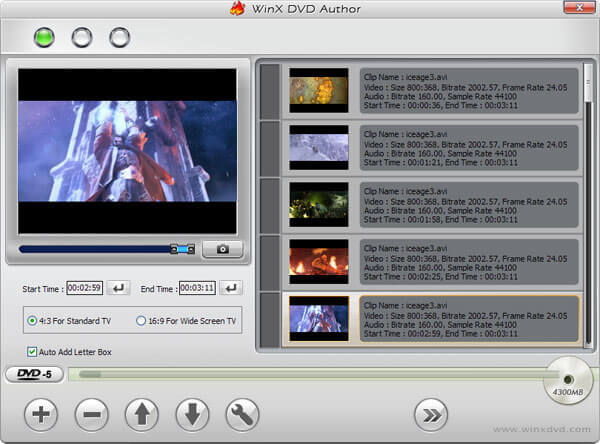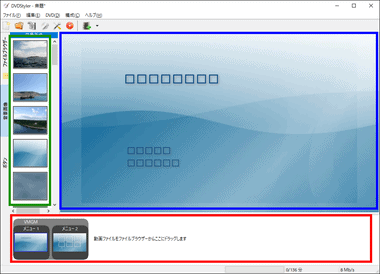

- #Free dvd authoring application full
- #Free dvd authoring application software
- #Free dvd authoring application iso
We strongly recommend you do a custom installation of this application and deselect ALL options except for the core CDBurnerXP application (which is safe).
#Free dvd authoring application iso
ISO is most common for CDs and UDF is most common for DVDs and BDs.There are some reports that one of the applications (OpenCandy) that is bundled with CDBurnerXP is malware.


Optical disc file system types include ISO 9660 (often known simply as "ISO") and Universal Disk Format (UDF). Sometimes disc images are even used to emulate the presence of a CD-ROM or DVD drive with the data entirely resident on the hard disc.įor the command-line tool cdrdao, a so-called TOC file that can be authored inside a text editor is used to specify the details of the desired disc record. Sometimes, disc images are made to make the authoring process more straightforward. There are also packet writing applications that do not require writing the entire disc at once, but allow writing parts at a time, allowing the disc to be used as a random access removable medium (somewhat like a very large floppy, though with unique constraints). ISO is most common for CDs and UDF is most common for DVDs. Many programs create the disc image and burn in one bundled application (Quick Copy or Copy On-the-fly), such that end-users do not even know the distinction.ĭisc file systems include ISO 9660 (often known simply as “ISO”) and Universal Disk Format (UDF).
#Free dvd authoring application full
Some operating systems come bundled with them.Ĭreating an optical disc usually involves first creating an optical disc image with a full file system designed for the optical disc, and then actually burning the image to the disc.
#Free dvd authoring application software
Such software is usually sold with the recorder. Use of optical disc recorders require optical disc authoring software, sometimes called "burning applications" or "burner applications". There are, however, stand-alone devices like personal video recorders which can also author and record discs. The disc image can then be tested after it is assembled but before writing to a physical disc.Īuthoring is commonly done in software on computers with optical disc recorders. Some programs can mount a disc image as a file system type, so these images appear as mounted discs. There are many optical disc authoring technologies for optimizing the authoring process and preventing errors. (Such a disc is colloquially termed a "coaster", a reference to a beverage coaster.) Due to this limitation, a non-rewritable disc whose burn failed for any reason cannot be repaired. However, if the disc is non-rewritable, a given bit can be written only once. This allows a user to construct a disc incrementally, as it could be on a rewritable medium like a floppy disk or rewritable CD. Some packet-writing applications do not require writing the entire disc at once, but allow writing of different parts at different times. Otherwise, they must rebuild the image each time they want a copy. If users override this default, telling the application to preserve the image, they can reuse the image to create more copies. Most disc burning applications silently delete the image from the Temporary folder after making one copy. However, it is useful to know because creating the disc image is a time-consuming process, while copying the image is much faster. Most optical disc authoring utilities create a disc image and copy it to the disc in one bundled operation, so that end-users often do not know the distinction between creating and burning. Then, one copies the image to the disc (usually write-once media for hard distribution). One may test the image on target devices using rewriteable media such as CD-RW, DVD±RW and BD-RE. To burn an optical disc, one usually first creates an optical disc image with a full file system, of a type designed for the optical disc, in temporary storage such as a file in another file system on a disk drive.


 0 kommentar(er)
0 kommentar(er)
